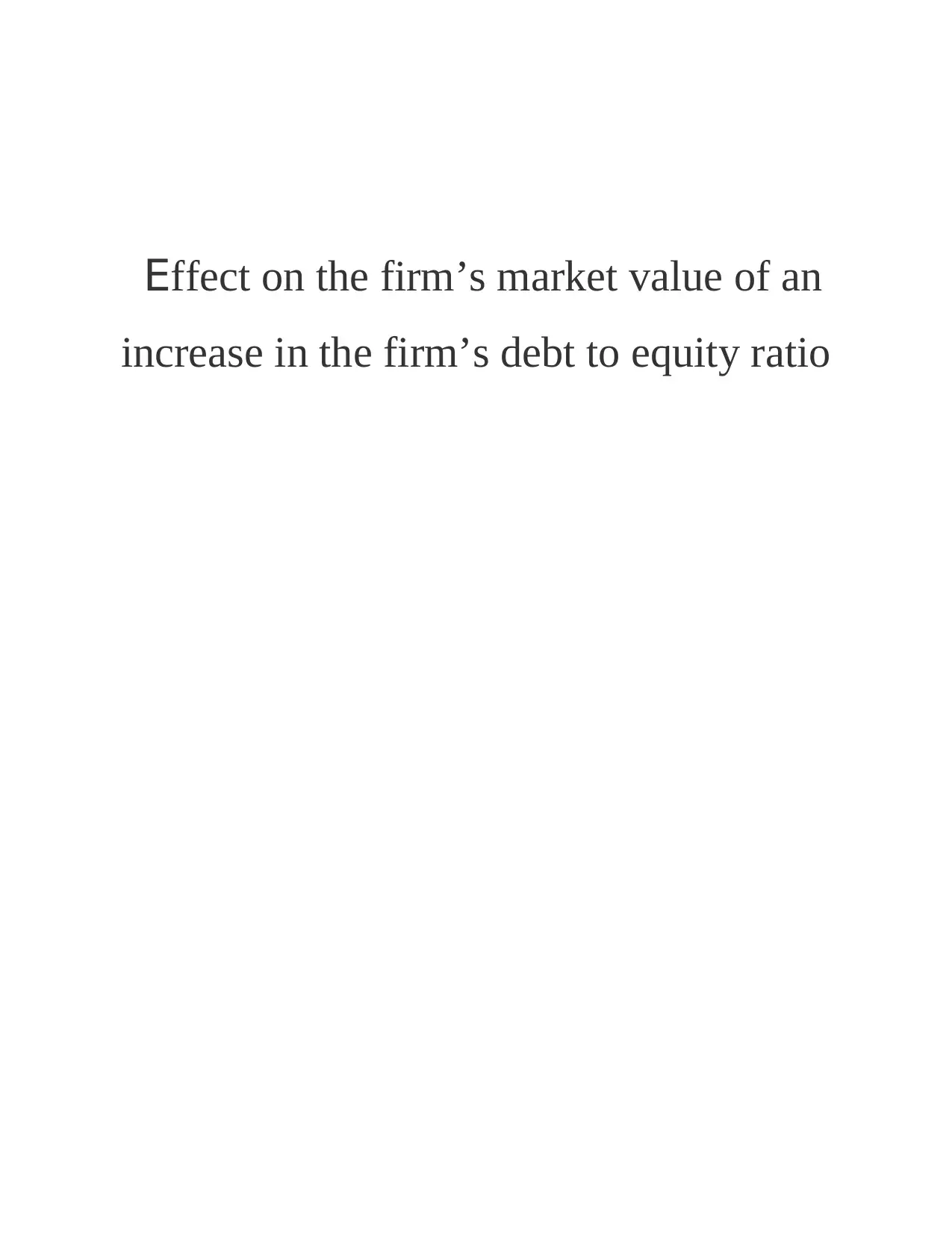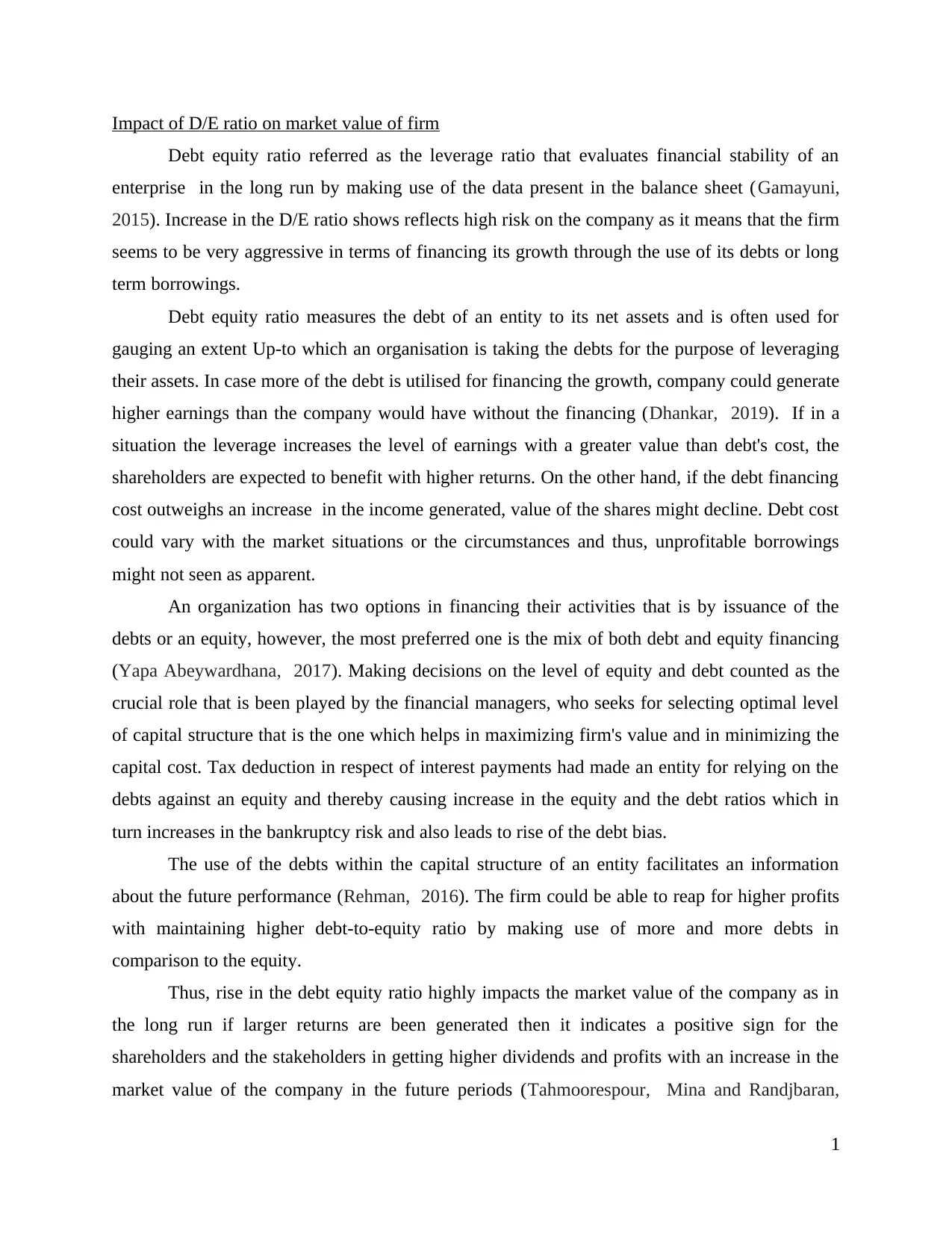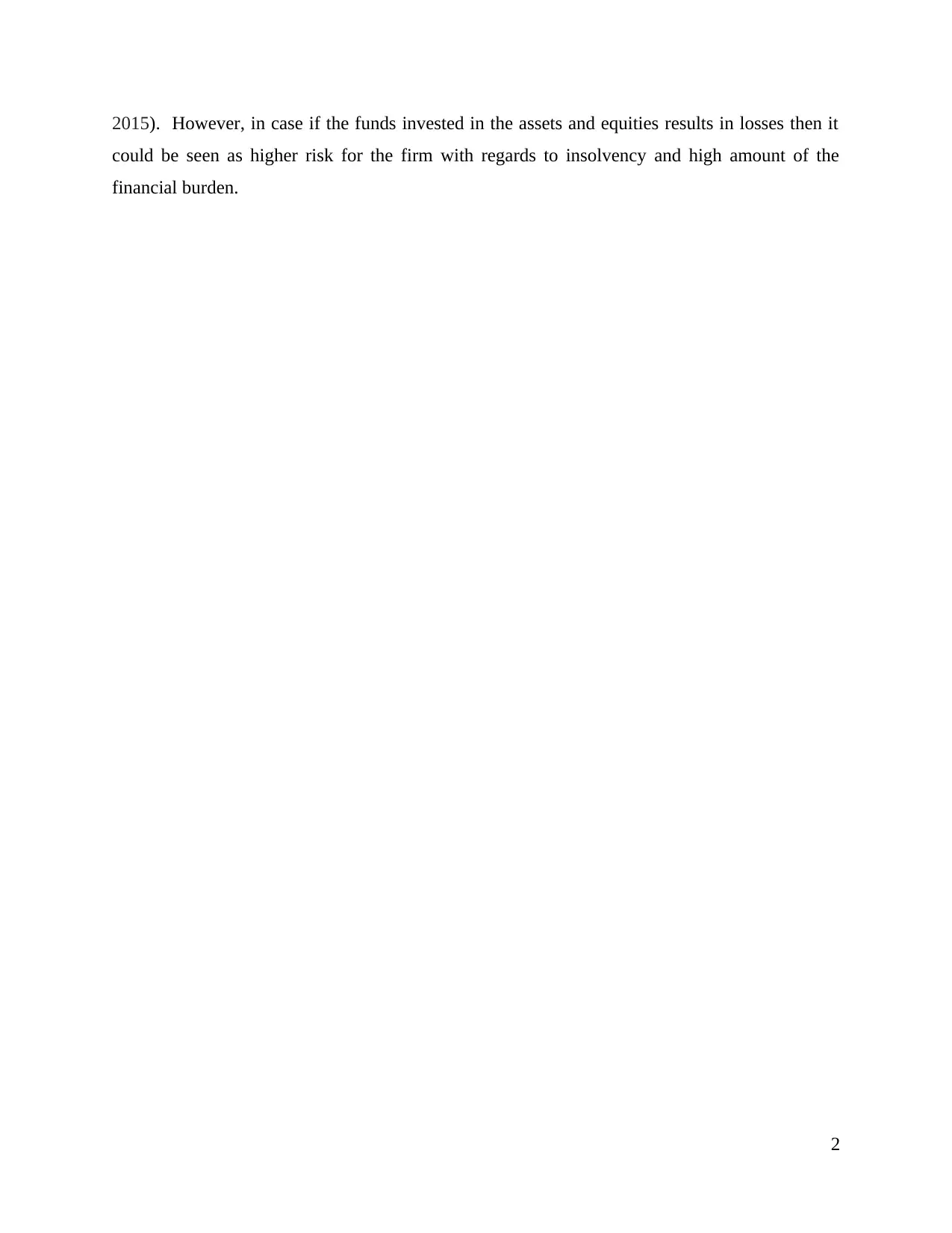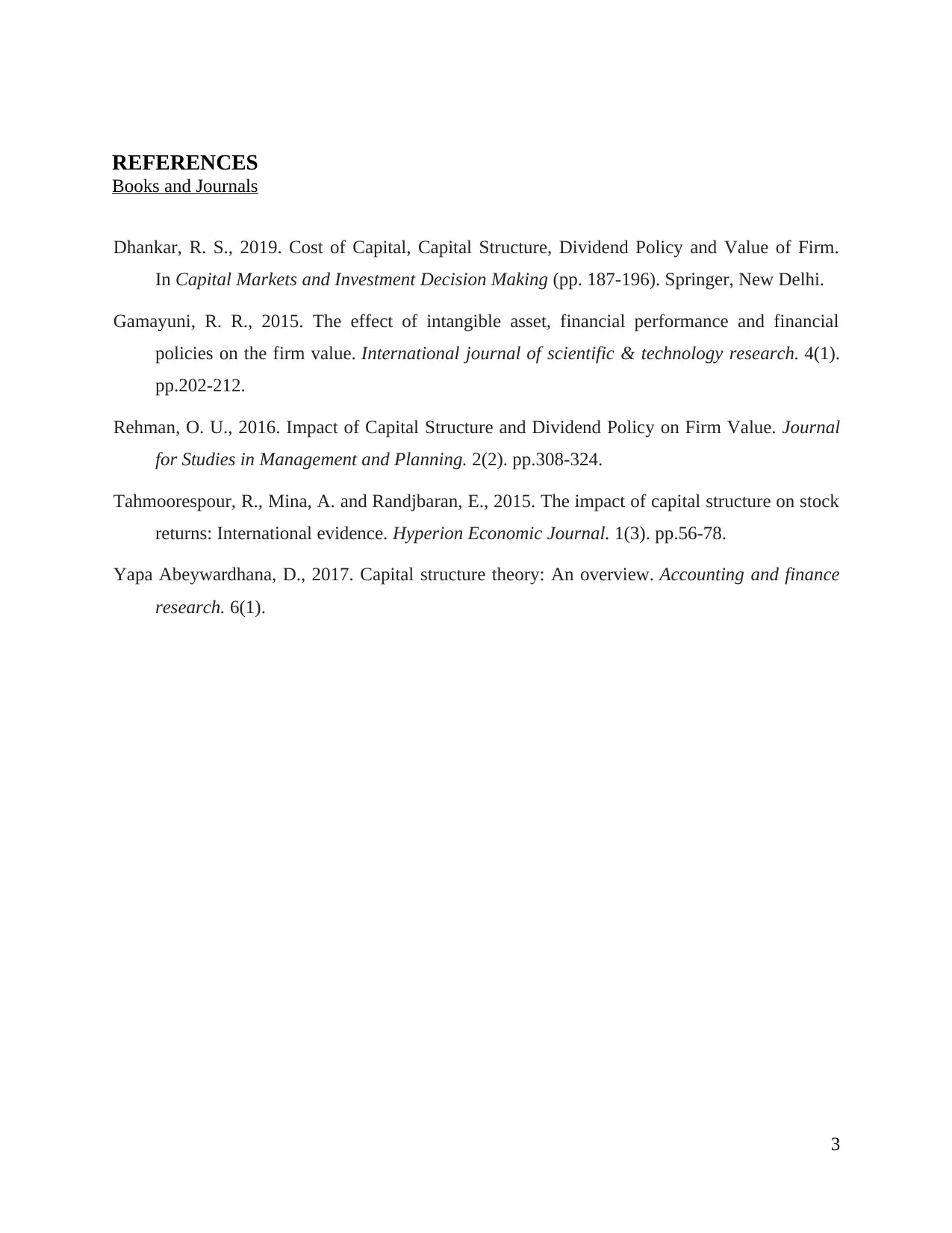Assessing the Effect of Debt/Equity Ratio on Firm's Market Value
VerifiedAdded on 2023/01/17
|5
|748
|61
Report
AI Summary
This report analyzes the impact of a firm's debt-to-equity ratio on its market value. The debt-to-equity ratio, a key financial leverage metric, is explored in detail, highlighting its influence on a company's financial stability. The report explains that an increase in the debt-to-equity ratio can signal higher risk but also potentially higher returns for shareholders if the company generates earnings exceeding the cost of debt. The report also touches upon the importance of capital structure decisions made by financial managers to optimize firm value. Tax benefits related to interest payments, and the use of debt as an indicator of future performance are also discussed, with a conclusion that an increase in the debt-to-equity ratio can positively impact the market value of the company in the long run if larger returns are generated, benefiting shareholders and stakeholders. The report references several academic sources to support its analysis.
1 out of 5












![[object Object]](/_next/static/media/star-bottom.7253800d.svg)